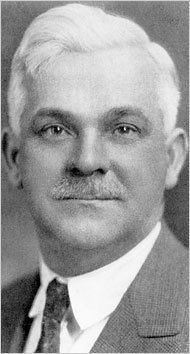Role Architect Name Thomas Lamb | Practice Thomas W. Lamb, Inc. Occupation Architect | |
 | ||
Born 1871 Dundee, Scotland, UK Structures Ohio Theatre, Landmark Theatre, Proctors, Capitol Theatre, United Palace Similar People Philippe Starck, John E Tourtellotte, Mark Hellinger, Ed Mirvish | ||
KCPT: Marquee : KC By Design: The Midland Theater
Thomas White Lamb (1871–1942) was an American architect, born in Scotland. He is noted as one of the foremost designers of theaters and cinemas in the 20th century.
Contents
- KCPT Marquee KC By Design The Midland Theater
- Winter Garden Theatre Toronto
- Career
- John J McNamara
- Residential architecture
- References

Winter Garden Theatre, Toronto
Career
Born in Dundee, Scotland, United Kingdom, Thomas W. Lamb came to the United States at the age of 12. He studied architecture at Cooper Union in New York and initially worked for the City of New York as an inspector. His architecture firm, Thomas W. Lamb, Inc., was located at 36 West 40th Street in Manhattan, New York.
Lamb achieved recognition as one of the leading architects of the boom in movie theater construction of the 1910s and 1920s. Particularly associated with the Fox Theatres, Loew's Theatres and Keith-Albee chains of vaudeville and film theaters, Lamb was instrumental in establishing and developing the design and construction of the large, lavishly decorated theaters, known as "movie palaces", as showcases for the films of the emerging Hollywood studios. His first theater design was the City Theatre, built in New York in 1909 for film mogul William Fox. His designs for the 1914 Mark Strand Theatre, the 1916 Rialto Theatre and the 1917 Rivoli Theatre, all in New York's Times Square, set the template for what would become the American movie palace.
Among his most notable theaters are the 1929 Fox Theatre in San Francisco and the 1919 Capitol Theatre in New York, both now demolished. Among his most noted designs that have been preserved and restored are the B.F. Keith Memorial Theatre in Boston (1928) (now the Boston Opera House), Warner's Hollywood Theatre (1930) in New York (now the Times Square Church), the Hippodrome Theatre (1914) in Baltimore, and the Loew's Ohio Theatre (1928) in Columbus, Ohio. Among Lamb's Canadian theaters that have been preserved are the Pantages Theatre in Toronto (1920) (now the Ed Mirvish Theatre). and Elgin and Winter Garden Theatres. The Cinema Treasures website, which documents the history of film theaters, lists 174 theaters designed by Lamb's company.
Aside from movie theaters, Lamb is noted for designing (with Joseph Urban) New York's Ziegfeld Theatre, a legitimate theater, as well as the third Madison Square Garden and the Paramount Hotel in midtown Manhattan.
Lamb died in 1942 in New York City at the age of 71. His architectural archive is held by the Drawings and Archives Department of Avery Architectural and Fine Arts Library at Columbia University.
John J. McNamara
During the last ten years of his practice, Lamb's associate was the architect John J. McNamara. After Lamb's death, McNamara continued as an architect of theaters under his own name. McNamara was responsible for renovating some of Lamb's older New York theaters, and among his original designs was one for the 1969 Ziegfeld Theatre in Manhattan, which replaced Lamb's original building.
Residential architecture
In 1920, Lamb designed for himself a private summer home in the Adirondacks in the village of Elizabethtown, New York. The house, which is still extant as a residence, is situated on the Boquet River. The eight-bedroom manor, referred to today as Cobble Mountain Lodge, is a shingle and cobble stone design marked by the inclusion of a stone turret.
